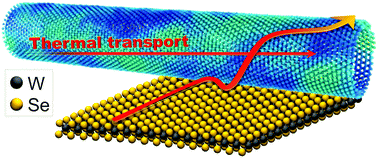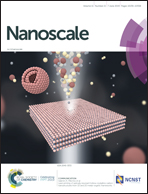Machine learning a bond order potential model to study thermal transport in WSe2 nanostructures
Abstract
Nanostructures of transition metal di-chalcogenides (TMDCs) exhibit exotic thermal, chemical and electronic properties, enabling diverse applications from thermoelectrics and catalysis to nanoelectronics. The thermal properties of these nanoscale TMDCs are of particular interest for thermoelectric applications. Thermal transport studies on nanotubes and nanoribbons remain intractable to first principles calculations whereas existing classical molecular models treat the two chalcogen layers in a monolayer with different atom types; this imposes serious limitations in studying multi-layered TMDCs and dynamical phenomena such as nucleation and growth. Here, we overcome these limitations using machine learning (ML) and introduce a bond order potential (BOP) trained against first principles training data to capture the structure, dynamics, and thermal transport properties of a model TMDC such as WSe2. The training is performed using a hierarchical objective genetic algorithm workflow to accurately describe the energetics, as well as thermal and mechanical properties of a free-standing sheet. As a representative case study, we perform molecular dynamics simulations using the ML-BOP model to study the structure and temperature-dependent thermal conductivity of WSe2 tubes and ribbons of different chiralities. We observe slightly higher thermal conductivities along the armchair direction than zigzag for WSe2 monolayers but the opposite effect for nanotubes, especially of smaller diameters. We trace the origin of these differences to the anisotropy in thermal transport and the restricted momentum selection rules for phonon–phonon Umpklapp scattering. The developed ML-BOP model is of broad interest and will facilitate studies on nucleation and growth of low dimensional WSe2 structures as well as their transport properties for thermoelectric and thermal management applications.



 Please wait while we load your content...
Please wait while we load your content...